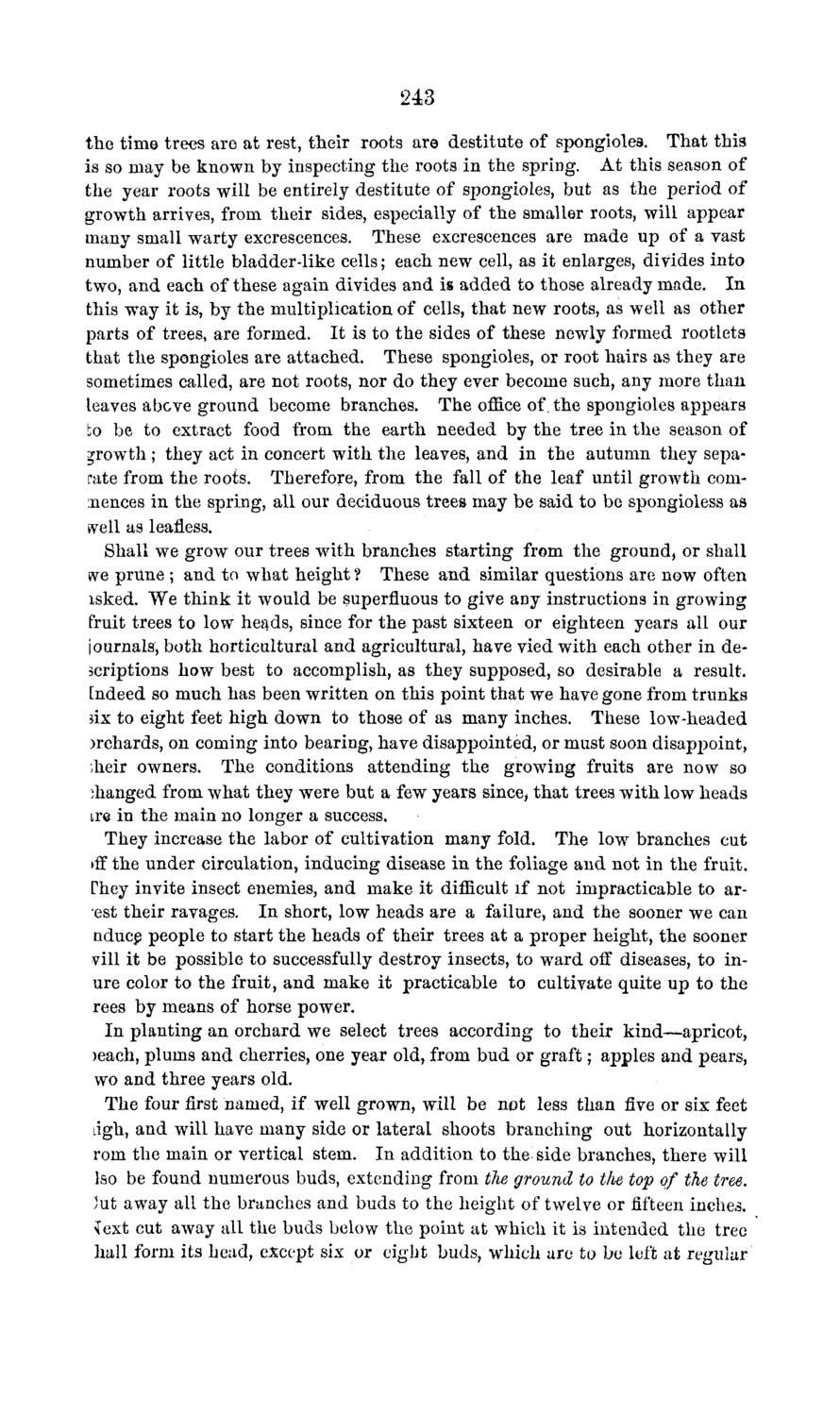| |
| |
Caption: Board of Trustees Minutes - 1869
This is a reduced-resolution page image for fast online browsing.

EXTRACTED TEXT FROM PAGE:
243 t h e time trees are at rest, their roots are destitute of spongioles. That this is so may be known by inspecting the roots in the spring. At this season of the year roots will be entirely destitute of spongioles, but as the period of growth arrives, from their sides, especially of the smaller roots, will appear many small warty excrescences. These excrescences are made up of a vast number of little bladder-like cells; each new cell, as it enlarges, divides into two, and each of these again divides and is added to those already made. I n this way it is, by the multiplication of cells, that new roots, as well as other parts of trees, are formed. It is to the sides of these newly formed rootlets that the spongioles are attached. These spongioles, or root hairs as they are sometimes called, are not roots, nor do they ever become such, any more than leaves above ground become branches. The office of. the spongioles appears bo be to extract food from the earth needed by the tree in the season of growth; they act in concert with the leaves, and in the autumn they separate from the roots. Therefore, from the fall of the leaf until growth commences in the spring, all our deciduous trees may be said to be spongioless as well as leafless. Shall we grow our trees with branches starting from the ground, or shall we prune ; and to what height ? These and similar questions are now often xsked. We t h i n k it would be superfluous to give any instructions in growing fruit trees to low heads, since for the past sixteen or eighteen years all our journals* both horticultural and agricultural, have vied with each other in descriptions how best to accomplish, as they supposed, so desirable a result. Indeed so much has been written on this point that we have gone from trunks six to eight feet high down to those of as many inches. These low-headed )rehards, on coming into bearing, have disappointed, or must soon disappoint, iheir owners. The conditions attending t h e growing fruits are now so changed from what they were but a few years since, t h a t trees w i t h low heads ire in the main no longer a success. They increase the labor of cultivation many fold. The low branches cut >ff the under circulation, inducing disease in the foliage and not in the fruit. Dhey invite insect enemies, and make it difficult if not impracticable to arest their ravages. I n short, low heads are a failure, and the sooner we can nduce people to start the heads of their trees at a proper height, the sooner vill it be possible to successfully destroy insects, to ward off diseases, to inure color to the fruit, and make it practicable to cultivate quite up to the rees by means of horse power. In planting an orchard we select trees according to their kind—apricot, >each, plums and cherries, one year old, from bud or graft; apples and pears, wo and three years old. The four first named, if well grown, will be not less than five or six feet agh, and will have many side or lateral shoots branching out horizontally rom the main or vertical stem. In addition to the side branches, there will lso be found numerous buds, extending from the ground to the top of the tree. )ut away all the branches and buds to the height of twelve or fifteen inches. Jext cut away all the buds below the point at which it is intended the tree hall form its head, except six or eight buds, which are to be left at regular
| |